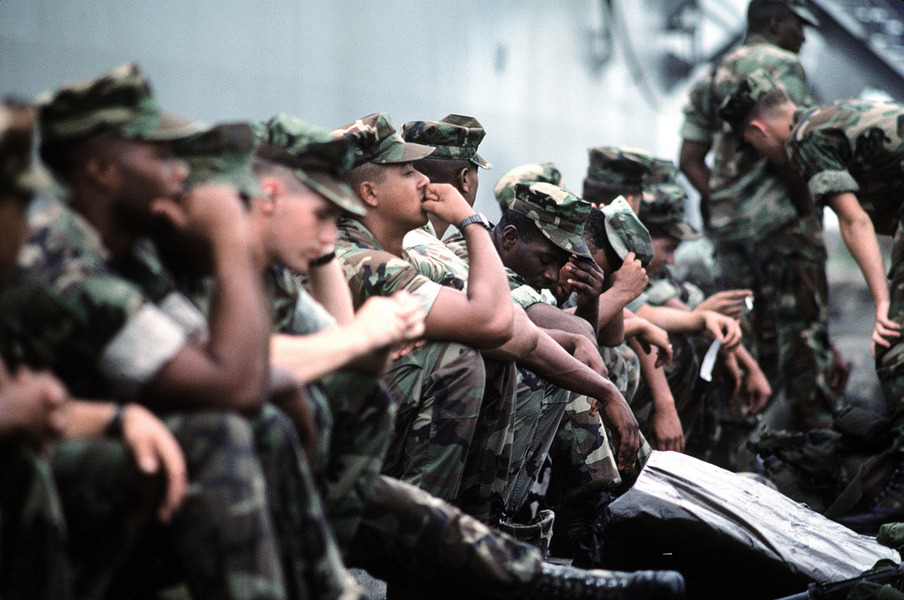The Cyclical Politics of Counterterrorism
Why didn’t the United States invade Afghanistan and destroy Al Qaeda before September 11, 2001?
Published by The Lawfare Institute
in Cooperation With

Why didn’t the United States invade Afghanistan and destroy Al Qaeda before September 11, 2001?
This isn’t as farfetched as it might sound. In 2001, President Bush issued a presidential directive instructing the Department of Defense to “‘develop contingency plans’ to attack both al-Qaeda and Taliban targets in Afghanistan.” After the 1998 East Africa embassy bombings, CIA Director George Tenet told employees that the Agency was “at war” with Al Qaeda. And the intelligence community well understood Al Qaeda’s grave threat to the homeland: the August 6, 2001, President’s Daily Brief included an item entitled “Bin Ladin Determined to Strike in US,” the 36th PDB item briefed that year on Al Qaeda.
The answer, I think, lies in the cyclical political dynamics that drive our counterterrorism policymaking—dynamics I explore in a new essay in The Washington Quarterly. The American public would not have supported a unilateral invasion of Afghanistan in the summer of 2001. By November, of course, it did—overwhelmingly.
We have seen a similar cycle play out time and again: insiders struggle to enact needed measures before a crisis strikes; a catastrophe finally seizes the American people’s attention; with the public now clamoring for greater security, Congress swiftly enacts landmark policy changes; eventually, after a few quiet years, the fear recedes and civil-liberties concerns emerge.
In short: the cyclical politics of counterterrorism.
These dynamics are on vivid display today, in debates over Section 702, encryption, and other issues affecting counterterrorism. In the United States, skepticism about “incidental collection” and use of U.S.-person data, coupled with concerns about unmasking, may affect reauthorization of Section 702, a key counterterrorism tool. Legislative responses to law enforcement’s encryption challenge have stalled.
By contrast, in Western Europe, which in recent years has suffered one horrific jihadist attack after another, the pendulum has swung decisively toward security. Since November 2015, France has been under a state of emergency, which permits the police to conduct extrajudicial warrantless searches of homes and businesses. And it is overwhelmingly popular: Eighty percent of the French public supports preserving or expanding the state of emergency, according to a recent poll. Meanwhile, French, German, and EU officials are exploring options to enable security services to access encrypted communications and devices, with little public opposition.
The essay explores some of the underappreciated nuances of this widely observed, but little-analyzed phenomenon. For example:
- Why counterterrorism policy is uniquely dominated by crisis legislation.
- How the cyclical politics of counterterrorism challenge both national-security policymakers and civil libertarians.
- What can be done to mitigate the volatility of counterterrorism policymaking.
- How current policy stalemates illustrate these dynamics.
The piece begins with an extended hypothetical: what if we had invaded Afghanistan in the summer of 2001?
On a summer night in late August 2001, the United States launched a massive surprise assault on al-Qaeda and Taliban targets in Afghanistan. Moments after the bombs and cruise missiles stopped falling, elite special-forces commandos landed at Osama bin Laden’s Tarnak Farms camp, killing bin Laden and dozens of his lieutenants. As the commandos’ helicopters took off from the devastated camp, they carried a massive haul of valuable intelligence—al-Qaeda records, hard drives, and cell phones used by the terrorists.
Analysts at the CIA’s Counterterrorist Center (CTC) immediately tore into this trove, hunting for any clues about potential al-Qaeda attacks on the U.S. homeland. They had good reason to fear such plots. Intelligence reporting that summer had produced a steady “drumbeat” of warnings that bin Laden was planning an attack in the United States or on our close allies. In the words of Director of Central Intelligence George Tenet, “the system was blinking red.” The President’s Daily Brief (PDB) given to President George W. Bush on August 6, 2001, had included an article titled “Bin Ladin Determined to Strike in US,” the “36th PDB item briefed so far that year related to Bin Ladin or al-Qaeda.”
What CTC’s analysts discovered exceeded even the worst fears of those who had urged the assault on bin Laden: al-Qaeda had planted sleeper operatives in the United States and planned to conduct a spectacular wave of simultaneous hijackings. By cross-referencing names found in the materials recovered from the camp with State Department and Immigration and Naturalization Service (INS) records, the FBI was able to identify and arrest several Saudi and Yemeni al-Qaeda operatives who had infiltrated the United States. Under interrogation, one of them revealed that they planned to hijack airliners using box cutters and then fly the planes into prominent buildings. While the FBI rolled up the remaining sleeper agents, the Federal Aviation Administration (FAA) mandated stringent aviation security measures to prevent suicide hijackings. And the ‘Summer of Threat’ gradually faded into a quiet autumn.
This is a fantasy, of course. We did not invade Afghanistan in the summer of 2001. Tragically, we did not uncover al-Qaeda’s plans….




.jpg?sfvrsn=1ec79bb0_5)
